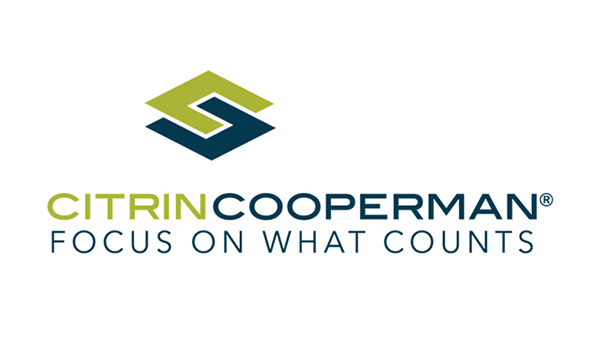Sunsetting Tax Provisions: Don’t be Left in the Dark

The Tax Cuts and Jobs Act (TCJA), which became effective January 1, 2018, ushered in some of the most significant tax law legislation in 30 years. Some of the provisions in the TCJA are permanent while others will sunset after 2025, unless extended by congress. Any extension of the sunsetting TCJA provisions will be costly with the Congressional Budget Office estimating a price tag at $2.7 trillion for an extension through 2032. This article summarizes some of the sunsetting provisions so taxpayers are not caught off guard and also provides some insight for some planning opportunities.
Sunsetting provisions
The Federal standard deductions, which are set at $13,850 (single) and $27,700 (married filing jointly) for 2023, are set to be reduced in half meaning a larger percentage of individual income tax filers will move from taking the standard deduction to itemizing their deductions, adding an additional layer of complexity to their annual filings.
The Federal cap on the state and local tax (SALT) deduction of $10,000 (married filing jointly) is set to end.
The mortgage interest deduction, currently limited to interest on $750,000 of qualified non-grandfathered debt, is set to return to its pre-TCJA levels of $1,000,000 of qualified debt with an additional $100,000 of qualified home equity interest debt.
The ability to deduct miscellaneous itemized deductions such as unreimbursed business expenses, investment fees, safety deposit box rentals and tax preparation fees will return. These miscellaneous itemized deductions will be subject to a two percent adjusted gross income floor whereby the amount in excess will be allowed as an itemized deduction.
The phase-down of itemized deductions, which was eliminated under TCJA, will return. This impacts high income taxpayers by reducing the benefits of certain itemized deductions.
The personal exemption deduction will return allowing for an inflation adjusted deduction per taxpayer and qualified dependents.
Under TCJA fewer people were subject to the alternative minim tax (AMT”) because of the high exemption amounts ($81,300 for singles, $126,500 married filing jointly n 2023) and high income phaseout amounts ($578,150 for singles, $1,156,300 for married filing jointly in 2023). After this sunsets, significantly more taxpayers will likely be subject to AMT.
Under TCJA, the corporate tax rate was reduced from 35% to 21% and to keep the playing field level for non-corporate taxpayers, TCJA provided a 20% deduction for qualified business income (QBI), subject to certain limitations. Although the QBI deduction is set to sunset, the corporate tax rate will remain at 21%.
Under TCJA, the child tax credit was increased from $1,000 to $2,000 per qualifying dependent under the age of 17 and is set to return to $1,000. The child tax credit is subject to income limitations under TCJA and after the provisions change.
The estate and gift tax lifetime exclusion under TCJA is just under $13 million per individual. The amount will be reduced by roughly half as part of the sunset.
The graduated tax rates/brackets under TCJA are set to be recast increasing the rates for almost all the income levels.
Planning opportunities
If a taxpayer currently takes the standard deduction, consider lumping or bunching itemized deductions such as charitable contributions into the 2026 year whereby it becomes advantageous to itemize your deduction versus taking the standard deduction.
With the prospect of rising income tax rates consider contributions or conversions to Roth IRAs. Taxpayers with a mix of pretax and Roth IRAs can better control their taxes in retirement by drawing from pretax sources when in lower tax brackets and from Roth IRAs when in higher tax brackets.
With the QBI deduction sunsetting after 2025 a taxpayer who owns a business that is eligible for a QBI deduction might consider, to the extent permitted, accelerating income into 2025 and deferring expenses until 2026 to potentially increase the income eligible for the QBI deduction. The QBI deduction is subject to limitations that should be considered prior to deploying this strategy. This strategy also has the advantage of pulling more income into 2025 before the rates increase in 2026.
With the decrease in the estate tax exemption making lifetime gifts before the end of 2025, taking advantage of the increased exemption amounts will remove not only the assets from estate taxation but also any appreciation on said assets. The Internal Revenue Service has issued regulations to prevent a “claw back” on lifetime gifts during the increased exemption period whereby an individual can make gifts over the lower 2026 exemption amount and up to the current exemption amount without the fear that the estate will need to claw back the exemption used. Portability elections made during the increased exemption period will not be affected by the sunsetting provision.
If you would like to get a deeper understanding of what this means to your specific situation, please reach out to Jeff Stuart at jstuart@citrincooperman.com.
 About the Author
About the Author
Jeff Stuart is a partner who provides a mix of audit, accounting, and tax compliance services to closely held businesses. Jeff’s industry expertise includes construction, real estate, manufacturing, and architectural and engineering firms as well as employee benefit plans.
About Citrin Cooperman
“Citrin Cooperman” is the brand under which Citrin Cooperman & Company, LLP, a licensed independent CPA firm, and Citrin Cooperman Advisors LLC serve clients’ business needs. The two firms operate as separate legal entities in an alternative practice structure. Citrin Cooperman is one of the nation”™s largest professional services firms. Clients are in all business sectors and leverage a complete menu of service offerings. The entities include more than 340 partners and over 1,900 employees across the U.S.